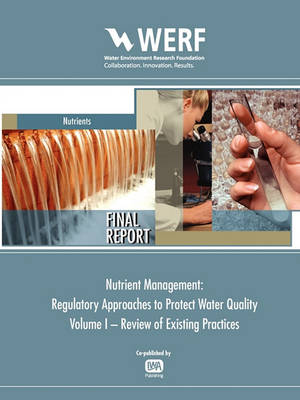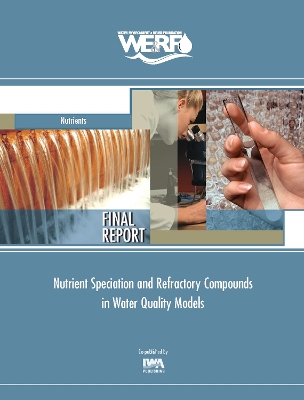WERF Research Report
2 total works
Utilities work with regulators to treat wastewater to levels that protect human health and ecosystems. Water quality criteria and permits are based on scientifically defensible and shared understanding of sources of pollutants in a watershed, as well as treatment capabilities and costs to control these in the aquatic environment. The national discussion of nutrient impacts on water quality continues to evolve - issues in high visibility water bodies such as the Chesapeake Bay, Long Island Sound, Gulf of Mexico, and Puget Sound highlight this. USEPA's efforts to promulgate numeric nutrient standards in all states raise questions about how these standards apply to wastewater dischargers, whether they are effective, and how they affect WERF Subscribers and others in the water quality arena.
This new WERF report, Nutrient Management: Regulatory Approaches to Protect Water Quality, Volume 1 Review of Existing Practices (NUTR1R06i) provides a state-of-the art discussion of key nutrient management issues that confront point source wastewater dischargers nationwide. It provides a better understanding of challenges that utilities and regulators face setting and meeting low nutrient effluent limits, and it expands understanding of the practical capabilities of treatment technology.
This new WERF report, Nutrient Management: Regulatory Approaches to Protect Water Quality, Volume 1 Review of Existing Practices (NUTR1R06i) provides a state-of-the art discussion of key nutrient management issues that confront point source wastewater dischargers nationwide. It provides a better understanding of challenges that utilities and regulators face setting and meeting low nutrient effluent limits, and it expands understanding of the practical capabilities of treatment technology.
NUTR1R06aa
Nutrient Speciation and Refractory Compounds in Water Quality Models
by David Clark
Published 15 September 2016
Water quality modeling efforts are designed to provide an understanding of watershed conditions to support management efforts that include control of point and nonpoint sources (NPS). Nitrogen (N) and phosphorus (P) speciation is an important area of nutrient research, both in terms of biodegradability in wastewater treatment and bioavailability in the water environment. Water quality modeling may not be reflecting all that is known about point source effluent N and P from treatment facilities that reduce the total amount of nutrients discharged and also change N and P speciation and reduce bioavailability. WERF research into advanced levels of nutrient removal treatment is revealing new information about N and P speciation and reduced bioavailability of the N and P remaining after advanced treatment.
Many of the more sophisticated mechanistic water quality models have the ability to simulate N and P species, and to some degree reflect refractory organic nutrient inputs and their subsequent degradation. Selecting water quality models with the capability of simulating nutrient species, and gathering monitoring data to characterize nutrient species and refractory compounds, is important to support enhancements in modeling.
Many of the more sophisticated mechanistic water quality models have the ability to simulate N and P species, and to some degree reflect refractory organic nutrient inputs and their subsequent degradation. Selecting water quality models with the capability of simulating nutrient species, and gathering monitoring data to characterize nutrient species and refractory compounds, is important to support enhancements in modeling.

